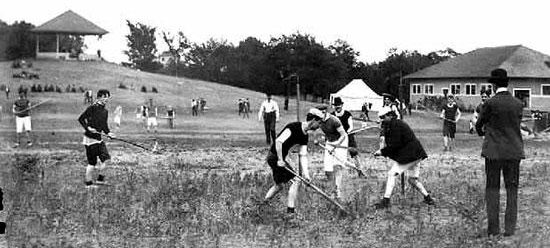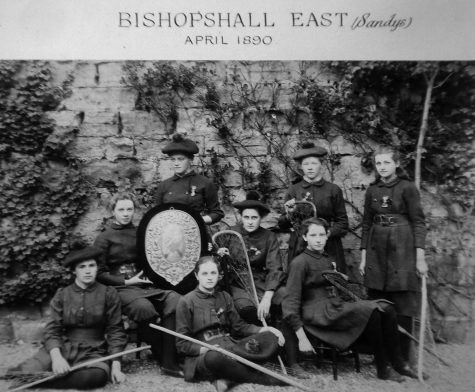The Diverse Roots of Women’s Lacrosse

19th century men’s field lacrosse played in Canada. {Photo courtesy of The Smithsonian.)
March 2, 2018
The earliest record of lacrosse dates back to early 1600s and played by Native American at the time of European contact.
Early data found on lacrosse provided in-depth information about team size, equipment used, the duration of games and the length of the playing field, but tell us almost nothing about stickhandling, game strategy, or the rules of play.
Apart from its recreational function, lacrosse traditionally played a serious role in Native American culture. Rooted in legend, the game continues to be used in Indian ceremonies for curative purposes.
Early records indicate the game of lacrosse was played differently by each Native American tribe. As the Southeastern tribes (Cherokee, Choctaw, Chickasaw, and others) played a double-stick version of lacrosse, the Great Lakes tribes (Ojibew, Menominee, Potawatomi, and others) used a single three-foot stick, and the Northeastern tribes (Iroquois League) used a three-foot stick with a flat triangular surface of webbing.
Today’s lacrosse is played with an octagonal shaft, and most closely resembles the northeastern tribes’ lacrosse sticks.

The first modern women’s lacrosse game was played in 1890, at St. Leonard’s School in Scotland. The headmistress of the school was inspired to hold a game after watching a men’s lacrosse game between the Canghuwaga Indians and the Montreal Lacrosse Club.
The game was played with two teams comprised of eight women. The match lasted one hour in total, not including the halftime interval and breaks after goal changes.
Soon after the Ladies Lacrosse Association was founded in 1912, the first international lacrosse game was played, and the number of players in a women’s lacrosse game increased to twelve players.
Rosabelle Sinclair, an alumna of St. Leonard’s School, played a very large part in the creation of women lacrosse teams in the United States. In 1926, Sinclair began an all-girls high school lacrosse team at Bryn Mawr School in Baltimore, MD. Soon after, women’s lacrosse became popular in surrounding schools.
Ironically today, women’s lacrosse played by non-native women today most closely resembles the Native American game of the past. The women on these teams still use wooden sticks, lack protective gear, and tend towards using mass attack rather than field positions.













